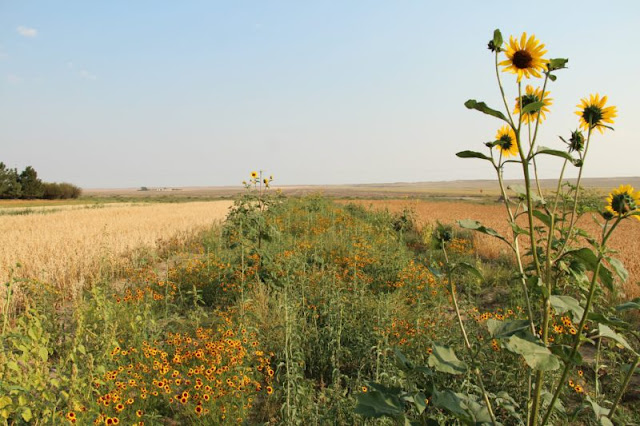Protecting native plants nationally with USDA-NRCS
by Eugene Kelly, Policy and Legislation Chair
 |
| A conservation buffer with native plants, photo by Jennifer Hopwood, Xerces Society |
The Society recently had
an opportunity to speak in support of native plants on a national
basis. The USDA’s Natural Resource Conservation Service (NRCS)
accepted comments on the Practice Standards they use while
implementing Farm Bill[wikipedia] programs. Landowners can apply for funding
assistance – typically on a cost-share basis – to make changes to
their agricultural practices that achieve a variety of conservation
benefits. The general substance or goal of a particular Practice
Standard can often be surmised from the title. Examples of Practice
Standards promoted by NRCS include Field Border, Forest Stand Improvement, Hedgerow Planting, Streambank and Shoreline Protection,
and Upland Wildlife Habitat Management. And the conservation
benefits of the practices are aligned with such Farm Bill objectives
as reducing erosions, enhancing habitat for wildlife, and attracting
pollinators.


One notable
deficiency in current Practice Standards is a lack of emphasis on use
of native plants when they are appropriate, and even advantageous.
We understand the obvious advantages of native plants. When the
National Wildlife Federation apprised the Society of this opportunity to
recommend changes to the Practice Standards, they invited us to
combine our voice with theirs. The eventual result was a joint
letter to USDA recommending that most Practice Standards be updated
to recommend the preferential use of native plants when they are
suitable for the objectives of the practice. By the time the letter
was submitted, 70 organizations were signatories and 8 of them were
Native Plant Societies. In addition to FNPS, our compatriots in the
California, Colorado, Illinois, Montana, North Carolina, Tennessee
and Virginia NPSs also signed on. Our friends at the Florida Exotic Pest Plant Council were also included.
Letter | Press Release
Edited by Valerie Anderson, staff
Originally published in the Sabal Minor Vol. 21:3
Letter | Press Release
Edited by Valerie Anderson, staff
Originally published in the Sabal Minor Vol. 21:3



Comments